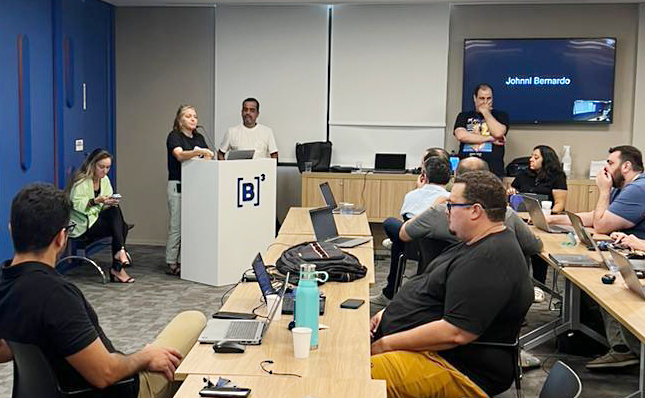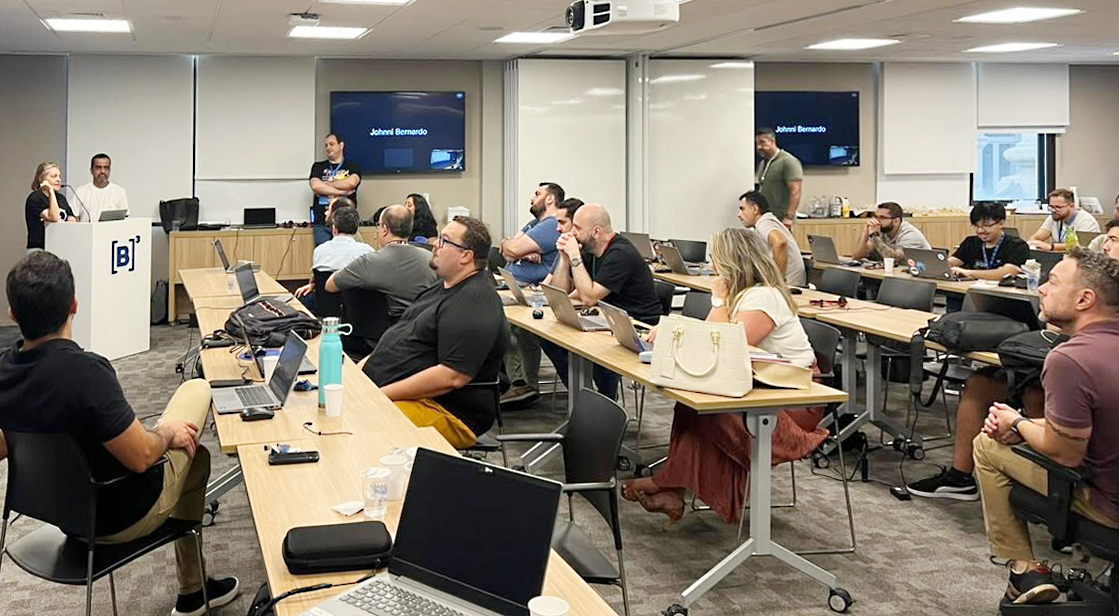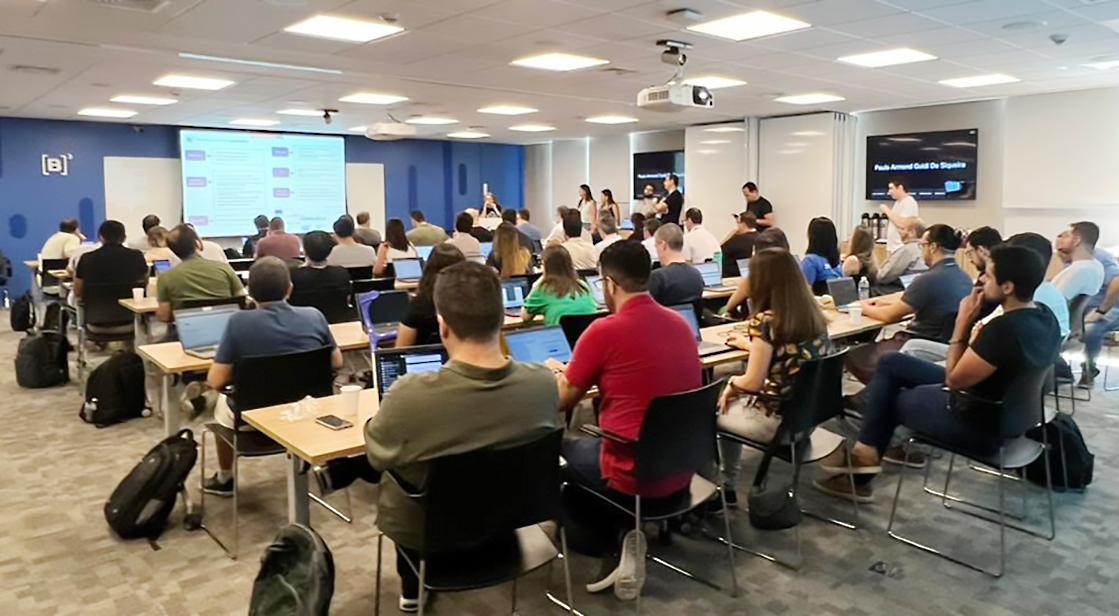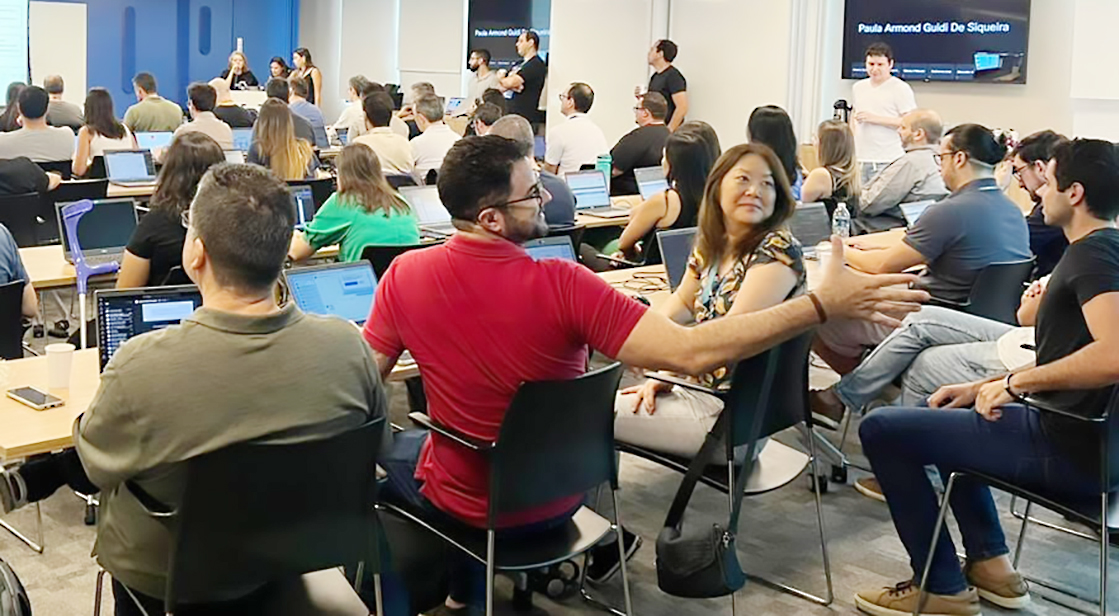
How do you adapt your organization’s culture so it’s more responsive to customer needs and can compete with emerging alternatives without disrupting what’s working or adding unnecessary layers of complexity—all while undergoing a major paradigm-shifting merger? This was the challenge facing Latin America’s largest stock exchange, B3 S/A Brasil Bolsa Balcao (B3), back in 2019.
Recently, Marcio Tambelini, SPC and Lean Agile Transformation Coordinator at B3, sat down with us at the 2023 SAFe® Summit Nashville to discuss his organization’s journey with SAFe over the past few years. He talked candidly about the challenges that led to B3 considering Agile methodologies, what motivated them to adopt the Scaled Agile Framework®, and their results.
- Challenges
- Process
- Results

B3 Challenges
Every organization has its own operating culture and norms. In the case of a merger, the challenge becomes combining those norms and establishing a new, unified way of working.
This was the situation facing B3 in 2019. At that point, B3 was two years into a merger that had ushered in a new era of its history. BM&FBOVESPA, a leading regional exchange, had joined forces with CETIP, a merger securities clearinghouse, creating B3. The combination positioned B3 as a key player in Latin America’s financial landscape. But it also created a need for shared values and common goals.
“We had a distance between these areas, and every area had different problems,” said Tambelini.
A growing number of competitors were also emerging in the Brazilian market, putting additional pressure on B3 to deliver new features, capture new markets, and respond to challenges faster and more predictably.
When leaders started exploring options for improving their culture, they were drawn to Agile for its focus on speed and collaboration. They were also interested in SAFe to provide the necessary training for scaling Agile practices.
“We decided that Agile would bring us common objectives and common challenges,” said Tambelini. “This was very important for us because each area had personal problems and personal challenges. So we decided to work together, and Agile methodology was the best way to resolve this problem for us.”

B3 Process
B3 started small with one Portfolio, using SAFe to guide the adoption of Agile principles at scale. In 2021, after proving the value of the Agile approach, they decided to upgrade to a SAFe Enterprise subscription. This would allow them to make training and resources available to the entire organization and better align the Agile adoption of separate teams.
By 2023, Agile practices had spread throughout B3. They had formed 32 value streams, with 121 Agile teams and more than 1,400 people working in those value streams. They had also begun expanding Agile values beyond development teams and into the operations side of the business.
“At B3, we’re working toward business agility, not just Agile … there are many initiatives in other areas like Human Resources, infrastructure, finance, and others,” said Tambelini.
He said the creation of value streams was particularly important to leaders because before, the various parts of B3 had functioned with different challenges and objectives, making it hard to track progress and align efforts. Value streams enabled them to see how each part of the organization played a critical role in delivering a product or service to the market.
Another way B3 brought teams together was by adopting shared metrics like Objectives and Key Results (OKRs) and key performance indicators (KPIs). They also shifted their mindset from “projects” to “products” to help teams better visualize the customer and focus on the end value delivered.
“This has given us the opportunity to enhance our customer-centric approach, delivering products and services that align more closely with their needs,” said Tambelini.

B3 Results
Tambelini said the results have been overwhelmingly positive, helping to secure B3’s position as the leading stock exchange in Latin America.
“All the portfolios that we started in the last two or three years had many kinds of good results, especially when we’re talking about the clients,” he said.
One of the biggest benefits has been the ability to deliver value to clients in a much shorter time cycle. Before, delivering a new product or feature could take up to a year. Now, B3 developers can roll out new features for clients throughout the year, much faster than was previously possible.
Within B3’s largest portfolio, which represented 70 percent of their revenue, the challenge had become managing layers of complexity among clients, markets, and regulators. So before proposing any drastic changes, leaders started by mapping out the interdependencies among platforms and teams.
Their initial priority with this portfolio was to bring alignment and transparency to the work. They chose to adopt Lean Portfolio Management (LPM) because they believed that starting at the top and focusing on the financial aspect among leaders and stakeholders would bring much-needed clarity and direction to the rest of the process.
“Our understanding grew, and we identified points of contact and bottlenecks,” said Tambelini. “We proposed value streams that could bring productivity gains and increase deliveries to the clients.”
Instead of budgeting for projects, they began budgeting for products, enabling B3 to increase speed and become more responsive as an organization.
“This action has been instrumental in our evolution, leading to significant gains with both customers and regulators,” he said. “We’re able to respond to new challenges, become more efficient, increase customer experience, and capture new markets.”
Juan Saldivar, Latin America business development director at Scaled Agile, Inc., said B3’s journey is one of many inspiring examples of how SAFe is helping businesses in the LATAM region transform, compete, and become more customer-centric.
“On the development side, they’ve seen shorter cycles, and, in one product release that I know of, they were able to get ten times the expected number of customers,” said Saldivar. “I think they realized the power of SAFe when building new solutions and new products and getting an attractive solution to market.”
B3 Conclusion
B3’s adoption of SAFe has proven highly successful, enabling leaders to overcome merger challenges and dynamic market pressures and begin to operate as one organization. Starting with one portfolio in 2019 and then expanding in the following years, they’ve been able to reduce delivery times and increase the value created. Their story proves the importance of approaching change intentionally, holistically, and with the customer at the center.
Check out these additional resources to learn more: